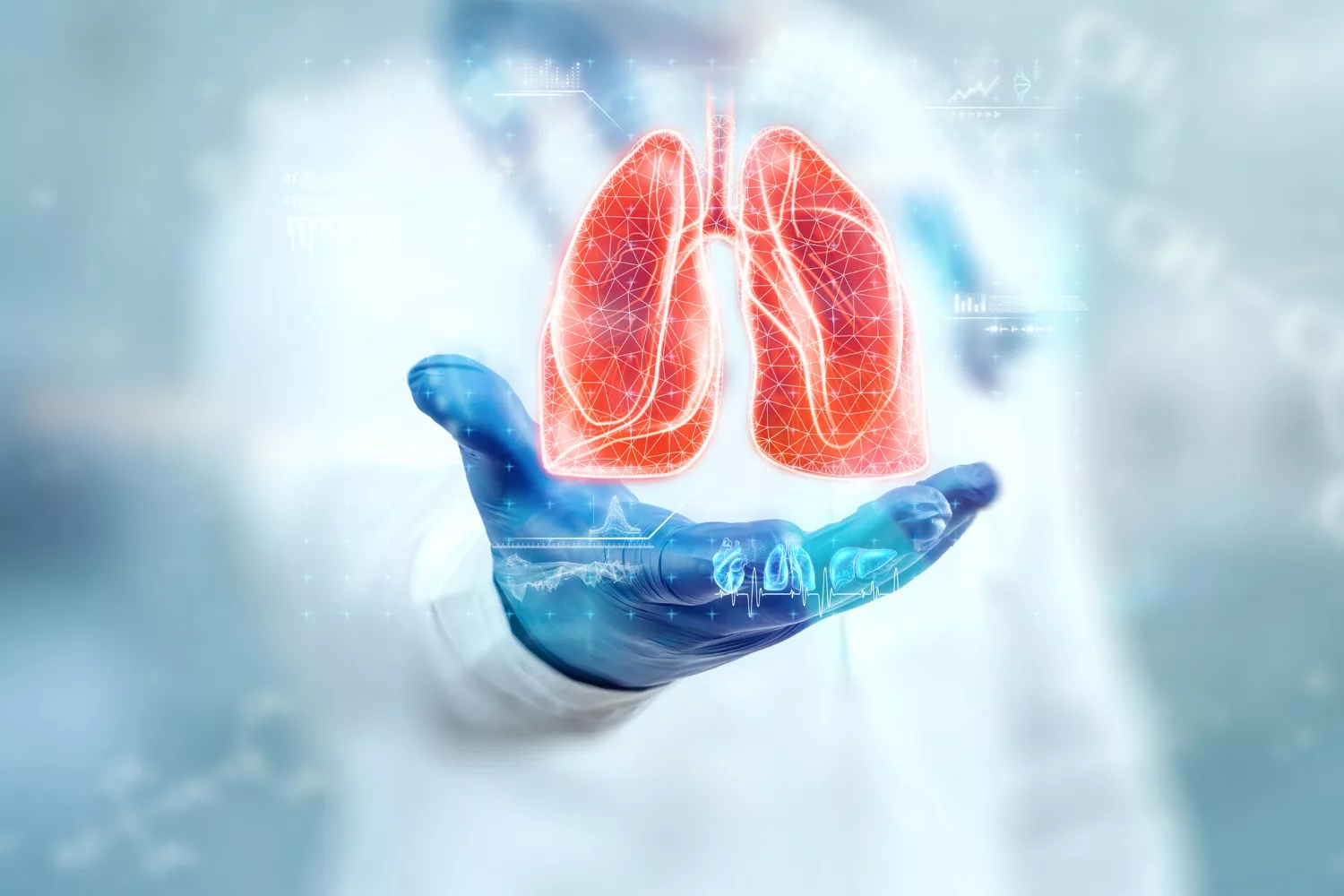
Lung cancer is the third most common cancer in the United States and the most common cancer worldwide. Its five-year survival rate is 18.6%, which is significantly lower than that of many other cancers including breast and prostate cancers.
Smoking causes 80% to 90% of all lung cancers. Lung cancer can often be easily prevented, even if it runs in your family.
What Is Lung Cancer?
Lung cancer is cancer that begins in the lungs. There are several types of lung cancer—many of which are either non-small cell lung cancer (NSCLC) or small-cell lung cancer (SCLC).
NSCLC is a slow-growing cancer and is more common than SCLC, as it accounts for an estimated 85% of all lung cancers. NSCLC includes:
- Squamous cell lung carcinoma. This type of lung cancer originates in cells that line the passages of the respiratory tract.
- Adenocarcinoma. This type of lung cancer originates in the outer part of the lungs.
- Adenosquamous carcinoma. This lung cancer originates in both squamous cells and mucus-producing cells.
SCLC is far more aggressive than NSCLC and accounts for an estimated 15% of lung cancers. It tends to be more common in males and Caucasians.
Mesothelioma is a type of lung cancer caused by exposure to asbestos. This lung cancer is aggressive and spreads quickly, and it does not respond well to treatment.
Symptoms of Lung Cancer
Lung cancer rarely produces symptoms in its early stages. When they do occur, early symptoms include shortness of breath and coughing.
Other symptoms of lung cancer include:
- Chest pain
- Wheezing
- Coughing up blood
- Fatigue
- Hoarse voice
- Loss of appetite
- Unexplained weight loss
- Frequent respiratory infections such as pneumonia or bronchitis
As lung cancer progresses, other symptoms may occur. These symptoms include:
- Bone pain
- Lumps in the neck
- Headache
- Dizziness
- Problems with balance
- Numbness in the limbs
- Shoulder pain
- Jaundice
- Constricted pupils
- Drooping of one eyelid
Causes of Lung Cancer
Smoking is the number one cause of lung cancer.
If you smoke cigarettes, your risk of developing lung cancer is 15 to 30 times higher than the risk for people who do not smoke. Cigarette smoke contains more than 7,000 toxic chemicals that can cause inflammation in the lungs and cell abnormalities that contribute to tumors and cancer.
Other causes and risk factors linked to lung cancer include:
- Exposure to secondhand smoke
- Exposure to toxins and hazardous substances including radon, asbestos, uranium, arsenic, diesel exhaust, and nickel
- Personal history of lung cancer
- Family history of lung cancer
- Radiation therapy to the chest
Treatments for Lung Cancer
The goal of lung cancer treatment is to shrink, destroy, and/or remove the tumor and to kill the cancer cells. Lung cancer treatment usually involves a combination of surgery, radiation therapy, and/or drug treatments.
Surgery may be performed to remove part or all of the lung affected by the cancer. In many instances, radiation therapy, chemotherapy, targeted therapy, and/or immunotherapy may be given before surgery to shrink or destroy the cancer.
The type of treatment you receive usually depends on your type of lung cancer and its stage. For example, if you have NSCLC in the lung and in the lymph nodes in the middle of your chest (stage 3 lung cancer), your doctor may recommend a combination of surgery, chemotherapy, and radiation therapy to fully destroy all the cancerous tissue.
Can Lung Cancer Be Prevented?
Most cases of lung cancer can be prevented, mainly because smoking is the top cause of this type of cancer. Being aware of lung cancer’s causes and risk factors can empower you to make healthy lifestyle choices and change harmful behaviors that are putting you at risk.
Steps you can take to prevent lung cancer include:
- Not smoking. If you need help quitting, ask your doctor about your options for smoking cessation treatments. Nicotine replacement, medications, and support groups are effective smoking cessation treatments that can help you stop.
- Avoiding secondhand smoke. Stay away from environments that expose you to secondhand smoke, such as casinos and bars. If you live with someone who smokes, talk to them about the importance of smoking outside and maintaining a smoke-free environment indoors.
- Checking your home for the presence of radon. Radon test kits are available from many retailers and can help you determine whether your home is exposing your family to radon.
- Following health and safety guidelines at work. If you work around hazardous substances like asbestos and radon that can cause lung cancer, make sure you follow the safety guidelines recommended by your employer, such as wearing protective gear at all times.
- Eating healthy foods. Fruits, vegetables, fish, eggs, and other natural whole foods are loaded with nutrients that can reduce your risk for inflammation and destroy cancer-causing free radicals.
- Exercising regularly. Most types of exercise—especially cardiovascular exercises like running and swimming—can strengthen your lungs, increase their capacity, and improve their functioning to reduce your risk for lung conditions including lung cancer.
See your doctor right away if you think you may have lung cancer based on your symptoms and lifestyle. Your doctor can perform an exam, review your medical history, and talk to you in more detail about your concerns. Early intervention and treatment are key to managing and surviving lung cancer.
Resource Links
- “Lung Cancer Statistics” via Centers for Disease Control and Prevention
- “Lung Cancer Fact Sheet” via American Lung Association
- “Small Cell Lung Cancer” via National Library of Medicine
- “What Are the Symptoms of Lung Cancer?” via Centers for Disease Control and Prevention
- “What Are the Risk Factors for Lung Cancer?” via Centers for Disease Control and Prevention
- “How Is Lung Cancer Diagnosed and Treated?” via Centers for Disease Control and Prevention